
Haie Vive: The Vibrant Heart of Cotonou
Explore Haie Vive in Cotonou, a vibrant neighborhood where modernity meets tradition, offering a unique blend of culture, cuisine, and nightlife.
Haie Vive is a bustling neighborhood in the heart of Cotonou, Benin’s largest city and economic hub. Known for its lively atmosphere, Haie Vive blends modernity with traditional African charm, offering an eclectic mix of experiences for tourists. It is a melting pot of cultures where expats and locals coexist harmoniously, making it an ideal spot for those looking to immerse themselves in the local way of life. Strolling through Haie Vive, you'll find a variety of restaurants serving both local and international cuisine, from delicious Beninese dishes to French pastries. The neighborhood is also home to vibrant bars and nightclubs, making it a hotspot for nightlife. During the day, you can explore the local markets, where artisans sell handmade crafts, textiles, and other unique souvenirs. One of the key attractions in Haie Vive is its proximity to the coastline. A short walk will take you to the beautiful beaches of Cotonou, where you can relax and enjoy the sun. The neighborhood is also well-connected, making it easy to visit other parts of the city, including the bustling Dantokpa Market and the historical Zinsou Foundation, which showcases contemporary African art.
Local tips in Haie Vive
- Visit local markets early in the morning for the best selection of fresh produce and crafts.
- Try the local street food, but make sure to choose vendors that are popular among locals.
- Use local taxis or moto-taxis for quick and convenient transportation around the neighborhood.
- Carry small denominations of the local currency (CFA Franc) for easier transactions in markets and small shops.
Haie Vive: The Vibrant Heart of Cotonou
Haie Vive is a bustling neighborhood in the heart of Cotonou, Benin’s largest city and economic hub. Known for its lively atmosphere, Haie Vive blends modernity with traditional African charm, offering an eclectic mix of experiences for tourists. It is a melting pot of cultures where expats and locals coexist harmoniously, making it an ideal spot for those looking to immerse themselves in the local way of life. Strolling through Haie Vive, you'll find a variety of restaurants serving both local and international cuisine, from delicious Beninese dishes to French pastries. The neighborhood is also home to vibrant bars and nightclubs, making it a hotspot for nightlife. During the day, you can explore the local markets, where artisans sell handmade crafts, textiles, and other unique souvenirs. One of the key attractions in Haie Vive is its proximity to the coastline. A short walk will take you to the beautiful beaches of Cotonou, where you can relax and enjoy the sun. The neighborhood is also well-connected, making it easy to visit other parts of the city, including the bustling Dantokpa Market and the historical Zinsou Foundation, which showcases contemporary African art.
Iconic landmarks you can’t miss
Amazon Statue
Explore the Amazon Statue in Cotonou, a stunning sculpture that embodies the cultural heritage and strength of the region's history.

Place du Souvenir, ex Place des Martyrs
Explore the rich cultural heritage of Benin at Place du Souvenir, a serene historical landmark in Cotonou that reflects the nation's past.

Esplanade des Amazones
Explore the majestic Esplanade des Amazones in Cotonou, a historic landmark celebrating the legacy of Benin's female warriors.

Monument Bio Guera
Explore the Monument Bio Guera in Cotonou, a historical landmark that embodies the cultural essence of Benin.

Place de l'amazone
Explore Place de l'amazone in Cotonou, a historical landmark celebrating the legendary female warriors of the Dahomey Kingdom.

Monument aux Dévoués
Discover the Monument aux Dévoués in Cotonou, a captivating historical landmark honoring national sacrifice and celebrating Benin's rich heritage.
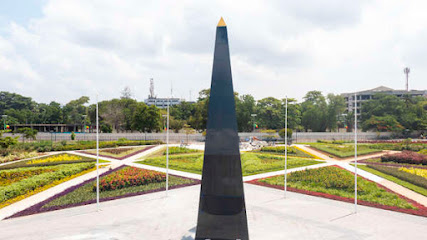
Statue Bio Guerra-Cotonou airport
Discover the Bio Guerra Statue at Cotonou Airport, a captivating symbol of Benin's cultural heritage welcoming visitors with its artistic grandeur.

Place des Martyrs
Discover the rich history of Benin at Place des Martyrs, where the echoes of the past resonate through captivating exhibits and heartfelt stories.

Independence Square
Explore Independence Square in Cotonou, a historic landmark that embodies the spirit of Benin's culture and independence.

Unmissable attractions to see
Dantokpa Market
Experience the vibrant culture of Cotonou at Dantokpa Market, where local crafts, delicious food, and lively interactions await every traveler.

Red Star Square
Discover the vibrant history and culture of Cotonou at Red Star Square, a must-visit historical landmark in Benin.
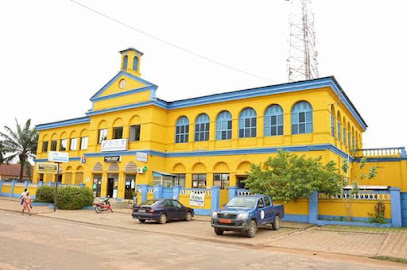
Place de l'amazone
Experience the vibrant history and culture at Place de l'Amazon, Cotonou's iconic historical landmark and social hub.

HLIKPE PARK BEACH
Experience the joy of adventure and relaxation at HLIKPE PARK BEACH, the ultimate family-friendly amusement park in Cotonou.

Independence Square
Explore Independence Square in Cotonou, a vibrant historical landmark where culture, history, and community come together in a lively, picturesque setting.

Visita Bénin
Explore the vibrant culture and history of Benin at Visita Bénin, a premier tourist attraction in Cotonou offering interactive experiences and local artistry.

Essential places to dine
Rïn Restaurant
Experience the best of African, French, and Japanese cuisines at Rïn Restaurant in Cotonou - a delightful culinary journey awaits you.

MAD
Savor exquisite flavors at MAD in Cotonou – where local traditions meet international cuisine in a warm and inviting atmosphere.

Restaurant Chill n' Grill cotonou
Discover Chill n' Grill: A delightful fusion of grilled delights and vibrant nightlife in Cotonou's heart.

Viva Mandarine restaurant
Experience authentic Beninese cuisine at Viva Mandarine - where every meal is a journey through flavor in Cotonou.

Wasabi restaurant
Discover the essence of Japanese cuisine at Wasabi Restaurant in Cotonou with fresh sushi, vibrant flavors, and an inviting atmosphere.

La Capanna
Discover the rich flavors of Benin at La Capanna in Cotonou—an authentic restaurant offering traditional cuisine in a warm atmosphere.

Le Lambi's
Discover the authentic flavors of Benin at Le Lambi's – a culinary treasure in Cotonou offering delicious local dishes and vibrant ambiance.
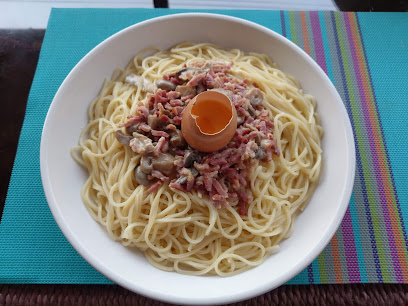
Le kidou
Experience the rich flavors of Beninese cuisine at Le Kidou buffet restaurant in Cotonou - a culinary delight not to be missed!

Restaurant Agapé
Experience the authentic flavors of Benin at Restaurant Agapé - a must-visit culinary destination in Cotonou.

PURAViDA 1
Discover culinary excellence at PURAViDA 1 in Cotonou, where local flavors meet international flair in an inviting atmosphere.

Markets, malls and hidden boutiques
NATURAL ADDICT - CONCEPT STORE
Explore Cotonou's vibrant shopping scene at Natural Addict, where fashion meets home goods and delicious deli treats.

ESPERO
Discover the essence of Benin at ESPERO, your one-stop gift shop for authentic souvenirs and artisanal treasures in Cotonou.

JB HOUNYOVI Couture & Prêt à Porter de Luxe
Experience the luxury of Benin's fashion scene at JB HOUNYOVI Couture, where exquisite craftsmanship meets unique style.

PEPITA D Boutique Annexe- GOLDEN TULIP
Explore the vibrant essence of Beninese fashion at PEPITA D Boutique Annexe in Cotonou, where unique accessories await.

OSHARA - BOUTIQUE DE VETEMENTS AFRO CHIC
Explore Oshara, your go-to boutique for Afro-chic fashion in Cotonou, where tradition meets modern style in every garment.

Kastro - accessoires en wax
Explore Kastro in Cotonou for unique, handcrafted accessories made from authentic wax fabrics, a true reflection of Benin's rich culture.

One by B- Bénin souvenirs
Explore unique Bénin souvenirs at One by B- in Cotonou, where culture and craftsmanship come together in every handcrafted piece.

D'or et de style by Michell'in Benin
Discover unique fashion accessories and artisan-crafted jewelry at D'or et de style by Michell'in in Cotonou, blending local artistry with modern elegance.
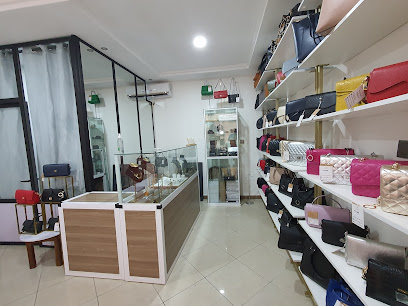
Sir John Concept Store
Explore the vibrant world of Benin's crafts at Sir John Concept Store, your go-to gift shop for unique souvenirs and local treasures.

Le Petit Shop
Discover unique local crafts and fashion at Le Petit Shop in Cotonou, a boutique that showcases the essence of Benin's artistry.

Essential bars & hidden hideouts
Code Bar
Discover the vibrant nightlife of Cotonou at Code Bar, where great drinks and lively atmosphere create unforgettable experiences.

La Villa Classic Lounge Bar
Experience the vibrant nightlife of Cotonou at La Villa Classic Lounge Bar, where exceptional cocktails meet delectable dishes in a lively ambiance.

Spoon Bar
Experience the vibrant culinary scene at Spoon Bar in Cotonou, where local flavors meet international delights in a lively atmosphere.

Homeboy lounge bar
Discover the heart of Cotonou's nightlife at Homeboy Lounge Bar - a lively venue perfect for music, drinks, and unforgettable moments.

Veniz Lounge-Bar/Restaurant
Experience the vibrant nightlife at Veniz Lounge-Bar in Cotonou, where delicious cocktails and exquisite dishes come together in an unforgettable setting.

Le Djabi lounge bar
Experience the vibrant nightlife of Cotonou at Le Djabi Lounge Bar, where delicious tapas and refreshing cocktails await.

Cosy Pool - Lounge Bar et Restaurant
Discover the tranquil charm of Cosy Pool - Lounge Bar et Restaurant in Cotonou, where relaxation meets delectable cuisine and refreshing drinks.
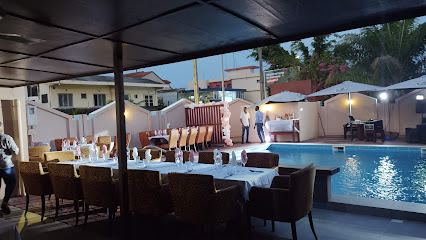
Chez Sam
Experience the vibrant atmosphere and refreshing drinks at Chez Sam, Cotonou's charming bar where locals and tourists unite.

The shark
Experience vibrant nightlife at The Shark, a lively bar in Cotonou offering a diverse drink selection and a welcoming atmosphere.

Coco Booster
Discover Coco Booster in Cotonou, the perfect bar to enjoy local flavors and refreshing drinks in a vibrant atmosphere.

Local Phrases
-
- HelloKuabo
[Koo-ah-boh] - GoodbyeDee daw
[Dee-dah] - YesEe
[Ee] - NoAh-hee
[Ah-hee] - Please/You're welcomeMi kpe
[Mee-kpeh] - Thank youMisa
[Mee-sah] - Excuse me/SorryEhn-kpa
[En-kpah] - How are you?Ku gbé ẹ?
[Koo geh eh] - Fine. And you?Adele. Ė wo?
[Ah-deh-leh. Eh woh] - Do you speak English?Ẹ sò yẹn angilé?
[Eh soh yehn ahn-gee-leh] - I don't understandMi ni ale
[Mee nee ah-leh]
- HelloKuabo
-
- I'd like to see the menu, pleaseMi ń gbé e menu, mi kpe
[Mee n geh beh meh-noo, mee kpeh] - I don't eat meatMi ki ń je ẹran
[Mee kee n jeh eh-rahn] - Cheers!Oṣé!
[Oh-sheh] - I would like to pay, pleaseMi ń gbé e lehin, mi kpe
[Mee n geh beh leh-heen, mee kpeh]
- I'd like to see the menu, pleaseMi ń gbé e menu, mi kpe
-
- Help!Ẹ jọwọ!
[Eh joh-woh] - Go away!Lọ sọ
[Loh soh] - Call the Police!Ẹ pe aṣọ
[Eh peh ah-show] - Call a doctor!Ẹ pe onisẹgun
[Eh peh oh-nee-seh-goon] - I'm lostMi ṣẹlẹ
[Mee sheh-leh] - I'm illMi ṣe alá
[Mee sheh ah-lah]
- Help!Ẹ jọwọ!
-
- I'd like to buy...Mi ń gbé...
[Mee n geh beh] - I'm just lookingMi ń wo nbe
[Mee n woh in-beh] - How much is it?Ẹ ò tọ òwo lo?
[Eh oh toh oh-woh loh] - That's too expensiveNí gbogbo òwo lo
[Nee gboh-gboh oh-woh loh] - Can you lower the price?Ẹ le kọ wọ ní òwo?
[Eh leh koh woh nee oh-woh]
- I'd like to buy...Mi ń gbé...
-
- What time is it?Kíni èdá?
[Kee-nee eh-dah] - It's one o'clockỌkan ti wọ
[Oh-kahn tee woh] - Half past (10)Ọsan
[Oh-sahn] - MorningỌ̀rọ̀
[Oh-roh] - AfternoonỌ̀sán
[Oh-sahn] - EveningỌ̀sán
[Oh-sahn] - YesterdayNí òní
[Nee oh-nee] - TodayNílẹ̀
[Nee-leh] - TomorrowỌ̀la
[Oh-lah] - 1Ọkan
[Oh-kahn] - 2Meji
[Meh-jee] - 3Mẹta
[Meh-tah] - 4Merin
[Meh-reen] - 5Marun
[Mah-roon] - 6Mefa
[Meh-fah] - 7Meje
[Meh-jeh] - 8Mejo
[Meh-joh] - 9Mesan
[Meh-sahn] - 10Mewa
[Meh-wah]
- What time is it?Kíni èdá?
-
- Where's a/the...?Níbè n wọ...?
[Nee-beh n woh] - What's the address?Kíni ìsọ̀nyí?
[Kee-nee ee-soh-nee-yee] - Can you show me (on the map)?Ẹ le wo mi (nigba igbimọ)?
[Eh leh woh mee (neeg-bah eeg-bee-moh)] - When's the next (bus)?Wọn n wọ lẹhin?
[Wohn n woh leh-heen] - A ticket (to ....)Ẹ fún mi ìtẹkẹ (si ....)
[Eh foon mee ee-teh-keh (see)]
- Where's a/the...?Níbè n wọ...?
History of Haie Vive
-
Haie Vive, like much of Cotonou, has roots that trace back to the colonial period when the French established their influence in Dahomey (now Benin). During the late 19th century, Haie Vive began to develop as a residential area for both local inhabitants and French settlers, reflecting the broader colonial architecture and urban planning trends of the time.
-
As Cotonou emerged as a crucial port city in West Africa, Haie Vive benefited from the economic activities associated with the port. The neighbourhood became a hub for trade and commerce, attracting merchants and traders from various ethnic backgrounds, including the Yoruba and Fon, and facilitating a blend of cultural influences that shaped local traditions.
-
In the mid-20th century, Haie Vive witnessed the rise of local cultural movements as the people of Cotonou began to assert their identity in the wake of independence from colonial rule in 1960. The neighbourhood became a vibrant center for artistic expression, including music, dance, and crafts, reflecting the rich traditions of the Beninese people.
-
The late 20th century brought significant urbanization to Haie Vive as Cotonou expanded. Infrastructure improvements, including roads and public services, transformed the neighbourhood, making it a more accessible and attractive area for residents and businesses. This development contributed to the cultural melting pot that defines Haie Vive today.
-
Today, Haie Vive hosts various cultural festivals and community events that celebrate the diverse heritage of Cotonou. Notable events such as the Festival of Voodoo and local music festivals highlight the neighbourhood's vibrant culture, showcasing traditional music, dance, and rituals that continue to play an essential role in the lives of its residents.
Haie Vive Essentials
-
Haie Vive is accessible from various parts of Cotonou. The nearest major transport hub is the Cotonou International Airport, approximately 5 kilometers away. Visitors can take a taxi or an Uber for a direct route to Haie Vive. Alternatively, local buses (known as 'benskin') connect different neighborhoods in Cotonou, including Haie Vive. If you're coming from the city center, expect a 15-20 minute ride depending on traffic.
-
Haie Vive is best navigated on foot due to its compact nature. For longer distances, local taxis and motorcycle taxis (zemidjans) are readily available. Public transport options include buses that run along main streets, but they can be infrequent. Renting a bicycle is also a popular option among locals and provides a great way to explore the area.
-
Haie Vive is generally safe for tourists, but it is advisable to remain vigilant. Avoid walking alone at night, especially in poorly lit areas. Petty crimes, such as pickpocketing, can occur, particularly in crowded markets. Areas to be cautious include the outskirts of Haie Vive where there may be higher incidences of opportunistic crime targeting individuals.
-
In case of emergency, dial 112 for police assistance or 121 for medical emergencies. There are local clinics and hospitals in Cotonou, with the nearest being around a 10-minute taxi ride from Haie Vive. It’s advisable to have travel insurance that provides coverage for medical emergencies and to keep a list of local emergency contacts accessible.
-
Fashion: Do dress modestly, particularly when visiting local markets or religious sites. Avoid overly revealing clothing. Religion: Do respect local customs; greetings should be polite and respectful. Public Transport: Do offer your seat to the elderly. Don't engage in loud conversations. Greetings: Do greet locals with a handshake; a smile goes a long way. Eating & Drinking: Do try local foods but ensure they are prepared in hygienic conditions. Don't drink tap water; opt for bottled water instead.
-
To experience Haie Vive like a local, visit the nearby markets, particularly the Marché Dantokpa, known for its vibrant atmosphere and fresh produce. Engage in conversations with vendors to learn about local traditions and cuisine. Don't miss trying 'akassa', a local staple, and 'gbegiri', a bean soup, at local eateries. Also, take part in local festivals if your visit coincides, as these offer a rich insight into Beninese culture.
Nearby Cities to Haie Vive
-
Things To Do in Porto-Novo
-
Things To Do in Ouidah
-
Things To Do in Lokossa
-
Things To Do in Aneho
-
Things To Do in Lagos
-
Things To Do in Lomé
-
Things To Do in Abeokuta
-
Things To Do in Notse
-
Things To Do in Atakpamé
-
Things To Do in Kpalimé
-
Things To Do in Ibadan
-
Things To Do in Ho
-
Things To Do in Koforidua
-
Things To Do in Accra
-
Things To Do in Benin City








